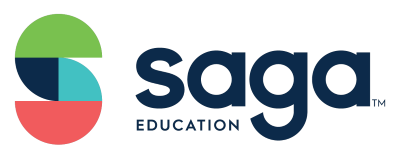This article is part of a new blog series called “Conversation Starters” that equips educators with powerful tools and resources for high-impact tutoring. This series helps educators to build resilient relationships with their students, enhance student motivation, and boost learning engagement. Discover how to creatively structure conversations with your students to foster communication skills, nurture connections, and promote self-awareness.
Social-emotional learning (SEL) is a big part of education and how students grow. With SEL, students learn to have good relationships with their friends, teachers, and themselves. SEL also helps students think about their emotional actions and understand how others feel. It also teaches them how to make responsible choices that affect those around them. When tutoring is super helpful, it’s because the student and tutor have a strong bond that makes learning even better. High-impact tutoring helps students become more confident. This happens because they have a good relationship with their tutors and teachers. When kids have someone who supports them and wants them to succeed, they feel empowered. They also feel comfortable trying new things and making mistakes. With proper training, tutors can create specific learning opportunities for students to use their social and emotional skills in a safe environment. Halley Bowman, the Senior Director of Academics at Saga Education, emphasizes the importance of caring adults in a student’s education for academic success. This involvement also helps students enhance their self-awareness, self-efficacy, and engagement in learning. Tutors use reflection prompts during sessions to help students develop social and emotional skills. When tutors use these prompts, it creates a positive connection with their students. This connection helps students feel more confident, engaged, and successful.
Key Takeaways:
- High-Impact Tutoring Boosts Learning Through SEL: By integrating Social-Emotional Learning (SEL) into tutoring, educators can build strong student-tutor relationships, promote self-awareness, and improve student achievement.
- SEL Reflection Prompts Foster Development: Using reflection prompts in tutoring sessions encourages students to explore their emotions, strengths, and challenges, leading to growth in the five core SEL competencies.
- Safe Space is Crucial for Student Reflection: Creating a safe and supportive environment is essential for students to feel comfortable sharing their reflections, fostering trust and boosting confidence.
Social-emotional learning (SEL) is a big part of education and how students grow. With SEL, students learn to have good relationships with their friends, teachers, and themselves. SEL also helps students think about their emotional actions and understand how others feel. It also teaches them how to make responsible choices that affect those around them. When tutoring is super helpful, it’s because the student and tutor have a strong bond that makes learning even better. High-impact tutoring helps students become more confident. This happens because they have a good relationship with their tutors and teachers. When kids have someone who supports them and wants them to succeed, they feel empowered. They also feel comfortable trying new things and making mistakes. With proper training, tutors can create specific learning opportunities for students to use their social and emotional skills in a safe environment. Halley Bowman, the Senior Director of Academics at Saga Education, emphasizes the importance of caring adults in a student’s education for academic success. This involvement also helps students enhance their self-awareness, self-efficacy, and engagement in learning. Tutors use reflection prompts during sessions to help students develop social and emotional skills. When tutors use these prompts, it creates a positive connection with their students. This connection helps students feel more confident, engaged, and successful.
The Five Competencies of SEL
The CASEL 5 Framework was created by the Collaborative for Academic, Social, and Emotional Learning (CASEL) to outline five key areas for SEL. This framework helps schools incorporate social-emotional learning into their daily activities, such as lesson planning and school policies. The five core SEL competencies are:- Self-awareness is how students identify and process emotions and reflect on their strengths and identities.
- Self-management is how students set goals, manage stress, and demonstrate resilience.
- Social awareness is a student’s ability to empathize and take account of others’ perspectives from similar and diverse backgrounds.
- Relationship skills are how students establish and maintain healthy relationships and collaboratively find solutions to challenges.
- Responsible decision-making is how a student analyzes situations, solves problems, and makes decisions promoting collective well-being.
Using Reflection Prompts in High-Impact Tutoring
High-impact tutors use reflection prompts to make their tutoring better for each student. They do this to help their students learn in the best way possible. By doing this, they also help their students develop important skills from the five SEL competencies. Tutors also better determine where their students need help by assessing their skills. They learn how to do this by using special tools and getting training in their tutoring programs. “Tutors have a lot of decisions to make in their tutorial [when connecting with their students]. So, the better we can help them with the right materials to facilitate conversations with their students, the more effective educators they will be,” states Bowman. “In turn, tutors can facilitate more impactful tutorial sessions that close learning gaps and develop more engaged learners.” Here’s how tutors use reflection prompts in high-impact tutoring:- A tutor presents a reflection prompt to a student.
- Students independently reflect on the prompt and may choose to write down a few thoughts.
- Students that feel comfortable can share their answers in a warm, informal conversation.
